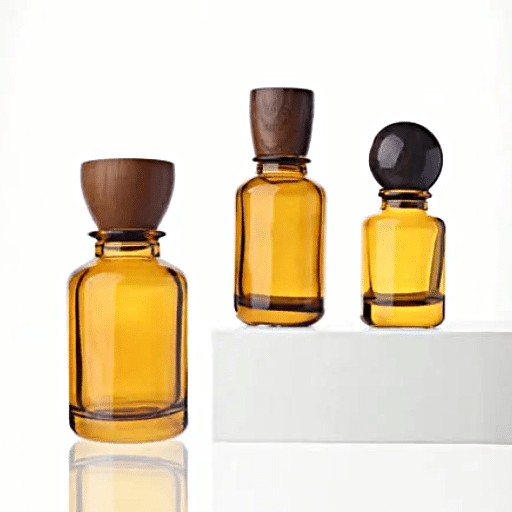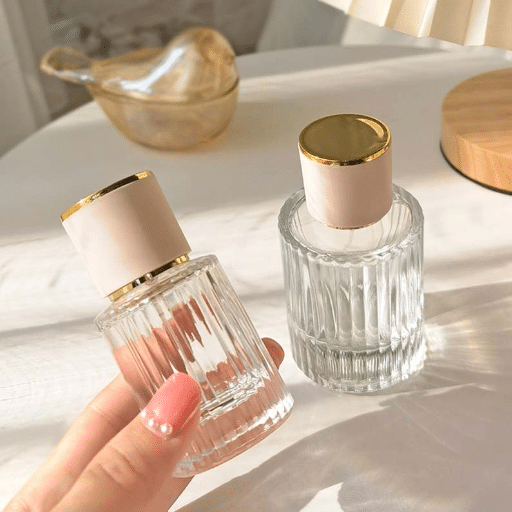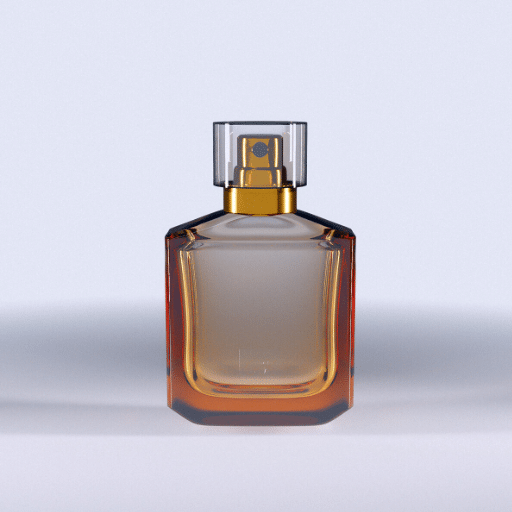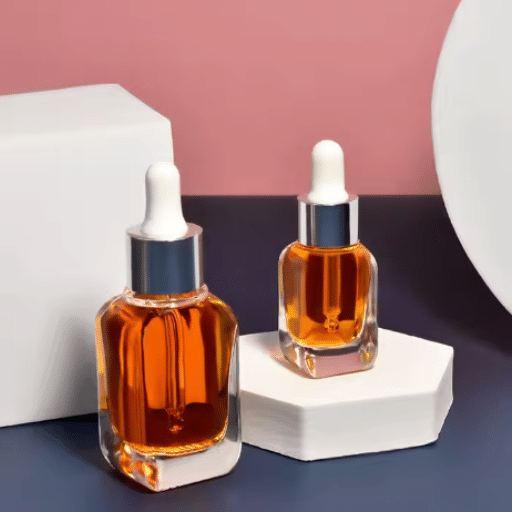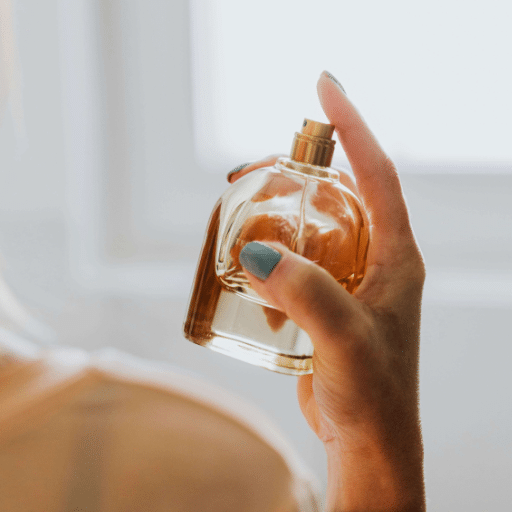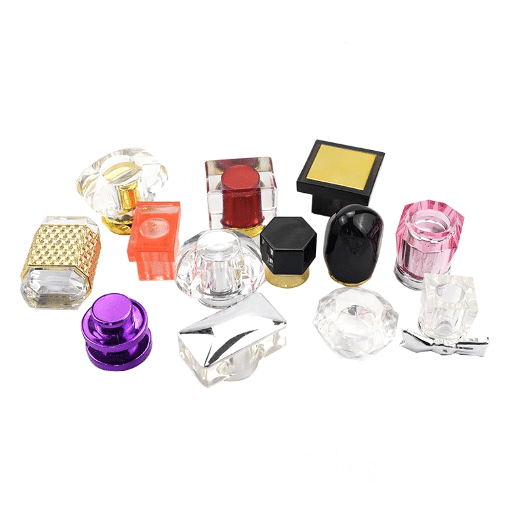Ever reached out for your favorite perfume only to discover that the spray nozzle refuses to cooperate? A nonworking perfume bottle is a great source of irritation, especially when you are rushing for a quick pleasant spritz. From clogged nozzles to uneven sprays, all are very common issues-and mostly easy to fix with a little knowledge. In this article, we will take a look at some basic troubleshooting to fix problems with perfume sprays. Be it a minor blockage or a more serious mechanical fault, we’ll walk you through the repair step by step to get your scent flowing once again. Keep reading as we demystify the repair process and get your perfume bottle back in tip-top shape.
Understanding Your Perfume Bottle and Spray Mechanism
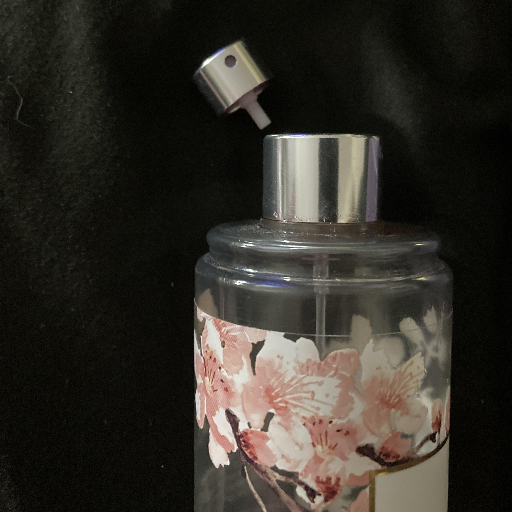
Perfume bottles generally comprise two main parts that work in tandem to dispense a thin mist of fragrance: the spray mechanism and the vial that contains the fluid. The spray mechanism consists of a pump connected to a nozzle, which upon being pressed, pushes the liquid through a small opening, atomizing it into a mist for even application. There is also an internal tube going down into the vial; this tube enables the perfume to be drawn up from the very bottom of the vial so that the user gets maximum usage. Most problems with spray mechanisms come from nozzle blockages, air blockage in the pump, or a loose seal to maintain pressure. Knowing about the ingredients will certainly help in understanding how to troubleshoot them.
The Anatomy of a Perfume Bottle
The average perfume bottle consists of many important components, each one serving a very specific purpose to allow the best functioning of the device. The basic components of the bottle are: the vial made of glass or plastic, the pump mechanism, the nozzle, and the cap. The waste glass body stores the fragrance secretively, with design to make it airtight so that the contents do not evaporate nor get contaminated. The pump mechanism contains a spring and a valve system to pressurize the system and draw the liquid upward. The nozzle operates to atomize the liquid into fine particles, facilitating uniform spray and application. Yet the installation of a metal or rubber seal around the pump would help ensure the internal pressure is being maintained at all times without leaking. With a good understanding of these components also equipped with a few common problem-solving tips and maintenance techniques, users can easily handle issues should they arise.
Types of Nozzles and Atomizers
The main types of perfume nozzles and atomizers include spray nozzles, rollerball applicators, droppers, pen applicators, aerosol sprays, and twist-up atomizers.
|
Type |
Mechanism |
Key Feature |
Common Use |
Refillable |
|---|---|---|---|---|
|
Spray Nozzles |
Pump action |
Fine mist |
Daily sprays |
Yes |
|
Rollerball |
Rolling ball |
Smooth glide |
Travel/target |
Yes |
|
Droppers |
Suction |
Precision drops |
DIY mixing |
Yes |
|
Pen Applicator |
Push button |
Compact design |
On-the-go use |
Yes |
|
Aerosol Sprays |
Pressurized |
Continuous mist |
Large areas |
No |
|
Twist-Up |
Rotary system |
Leak-proof |
Pocket use |
Yes |
Understanding Common Issues with Perfume Sprays
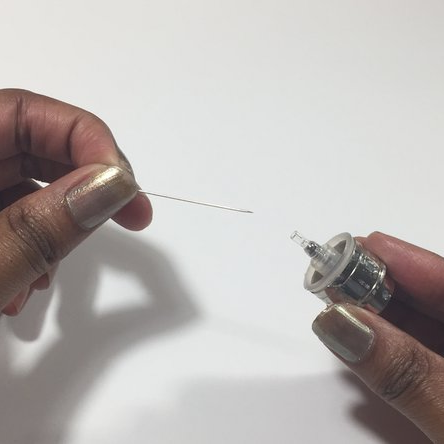
Typically, problems with perfume sprays are either in the design or usage of the applicator. For spray nozzles, clogging can be an issue and it could arise from residue building up or improper cleaning. Rollerballs can cease producing a smooth gliding action with time due to drying or obstruction with dirt. At times, dropper applicators are less precise if the suction mechanism gets damaged or obstructed. Pen applicators frequently leak once the push-button mechanism wears out. Aerosol sprays lose their pressurization and become almost useless. Twist-ups are reliable most of the time but can encounter alignment problems that affect a smooth application. These issues can mostly be resolved with regular maintenance and correct use.
Clogged Nozzles: Causes and Solutions
In my experience, after working with industry-standard methods and protocols, blockage of nozzles is most often caused by residue buildup, drying of the product inside the nozzle, or inappropriate storage conditions. In the case of aerosol sprays, the most common cause is usually dried product blocking the spray path, especially with the can stored inappropriately-without clearing the nozzle after use. Pen applicators and something like the twist-up mechanism might face the same difficulties if the products are not capped tightly enough.
I then came back with some cleaning tips. After each use, clear the aerosol spray of the nozzle by holding it upside down and spraying briefly. To clean a blocked nozzle, remove it and either soak in warm water or dislodge any blockage with a pin. Twist-up applicators need to be checked for alignment and to ensure the product is properly capped to prevent residue buildup. Keeping them clean and storing them properly is important for their function and extending their life.
Uneven Sprays: Identifying the Problem
Uneven spray patterns can be caused by a large number of issues, such as partial nozzle blockages, poor can pressure, or uneven actuator wear. Begin by inspecting the nozzle for any obvious debris or residue, as this is a usual culprit for incomplete dispersion. Check to see if the product has been taken out of the bottle and shaken well enough so that the mixture is homogeneous because poor mixing can generate uneven spray outputs. In addition, make sure the can is held upright while spraying, since tilting may disturb the flow inside. It is important to clear the nozzle after each use and to store it well to prevent irregularities in spraying.
Broken Mechanisms: When to Replace
Determining whether to replace a broken mechanism is mostly function-based and depends on the ability to fix it. I choose to replace it if it continues to fail and is unresponsive to movement or if significant structural damage is present, especially after troubleshooting steps like cleaning or resetting fail to solve the problem. Frequent malfunctions or irreversible wear usually mean that further use is not viable or could endanger the overall performance. Replacement is, therefore, considered to ensure the best outcome in terms of safety and efficiency; using compromised equipment is too risky to maintain.
Step-by-Step Guide to Fixing Your Perfume Bottle
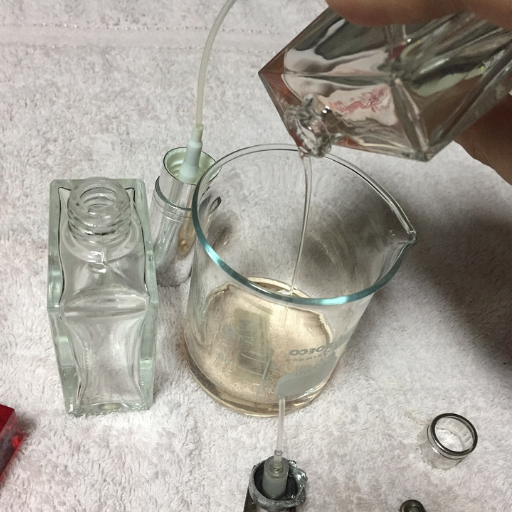
1.Assess the Problem
Name the encountered problem with the perfume bottle: clogged nozzle, loose cap, or defective spray mechanism.
2.Clean the Nozzle
Remove the nozzle from the bottle and wash under warm water to clear any obstruction. Use a pin or toothpick to remove debris gently.
3.Check the Tube
Make sure that the plastic tube inside the bottle is not bent or obstructed. Straighten or reposition it when necessary.
4.Test the Mechanism
Attach the nozzle again and try to spray. Should the problem continue, check the points of connection of nozzle and bottle for any damage.
5.Tighten Loose Parts
Tighten anything that feels loose. This includes any spray heads or caps.
6.Replace Damaged Parts
In the event that cleaning or adjustment cannot rectify the problem, consider replacing the parts that do not function properly, e.g., spray nozzle, or transferring the perfume into another bottle.
Tools You’ll Need for the Repair
1.Small Screwdriver
This will be used for adjusting or tightening components on the nozzle or the bottle.
2.Cleaning Solution and Cloth
Used for cleaning off residue or clogging debris from the spray nozzle.
3.Replacement Nozzle or Bottle
Used as a backup if the original parts are damaged beyond repair.
4.Cotton Swabs
Excellent for cleaning hard-to-reach places without damaging anything.
5.Protective Gloves
To ensure a safe handling process of components, and also to protect the perfume from contamination.
How to Disassemble the Spray Nozzle Safely
1.Working Setting
Clamp a clean, flat surface and put a soft cloth so that the components do not roll away or get damaged. Ensure that all the necessary tools mentioned above are within reach.
2.Remove the Nozzle Cap
Forcefully twist or pull the cap off the bottle, depending on its setup, to expose the inner nozzle. If the cap resists, use a piece of cloth for a better grip and avoid putting in more force.
3.Detach the Spray Mechanism
Holding the base of the spray assembly firmly, gently twist or pull it away from the bottle. Some nozzles are designed to be unscrewed; in that case, check for threaded parts.
4.Inspect Individual Components
Take apart the internal components of the spray nozzle-level tubing, spray head, and filter-if possible. Be aware of any small parts being easy to lose in the disassembly process.
5.Handle with Care
Always wear protective gloves to maintain sterility and avoid damage to the perfume formulations, which are very sensitive. Also, avoid sharp objects that could puncture or scratch fragile components.
You will be able to disassemble a spray nozzle safely and without compromising the working of the spray or bottle contents by adhering to the above steps.
Cleaning the Nozzle: Techniques and Tips
1.Initial Rinse with Warm Water
Flush the nozzle with warm water to wash away loose debris and residues, which may soften some of the harder substances that are obstructing the flow.
2.Apply Cleaning Solution
Prepare a cleaning solution approved by the manufacturer, or prepare a very light soap solution. Immerse the nozzle in the solution or scrub it gently with a small brush to remove the hardest deposits.
3.Compressed Air Has Its Use
Make sure the nozzle is dry from any remaining particles by blowing with cans of compressed air. The strongest and most effective air streams are directed right into the nozzle.
4.Examination Using a Magnifying Glass
The nozzle is to be examined through a magnifying glass to check for any micro-clogs or hidden blockages that need more attention to deal with.
5.Complete Drying Prior to Attachment
The nozzle should be dry at all times by wiping it with a clean cloth that does not lint; otherwise, the moisture could result in further blockage or damage during attachment.
Preventative Measures to Maintain Your Perfume Spray
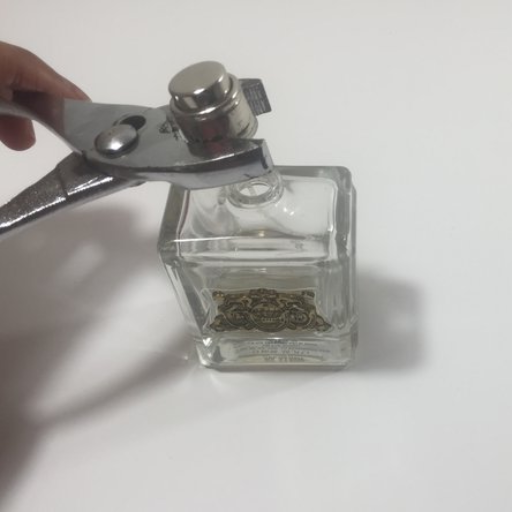
1.Store away from Heat and Humidity
Protect your perfume spray from sunlight, moisture, or heat that may lead to the degradation of the fragrance and its components.
2.Keep the Nozzle Clean
Wipe it down with a clean cloth from time to time to prevent the build-up of any residues that may clog it or cause it to spray unevenly.
3.Do Not Shake
Unless affirmed by the manufacturer, don’t shake the bottle- air bubbles created can alter the spray consistency.
4.Replace the Cap After Use
Keep the cap on after use to protect the nozzle from dust and debris that could cause blockages over time.
5.Proper Disposal of Expired Perfume
Keep an eye on your perfume’s shelf life and dispose of it the day it expires so that your spray mechanism remains in optimal working condition.
Proper Storage of Your Perfume Bottle
To make sure a perfume lasts long and retains its quality, it must be properly stored. Avoid direct sunlight exposure; heat and UV rays would alter and degrade the fragrance. Store the bottle in a cool, dark place, such as in a drawer or a cabinet. Avoid Springfield, which is a highly humid location; moisture can ruin the perfume. Always keep the bottle upright to avoid leakage. Also, close the bottle tightly after every usage to prevent the escapement of air. This way, the fragrance’s olfactory notes will never change along with its potential effect.
Regular Cleaning: How Often Should You Do It?
I would say clean the perfume bottle once every few months or any time you see buildup or residue near its nozzle or cap. This helps keep the spraying mechanism working smoothly and prevents the fragrance from getting contaminated. To clean it, I absorb cleaning with a soft lint-free cloth that is just damp with a bit of water or rubbing alcohol and gently wipe the exterior and the nozzle of the bottle. I never submerge it; also, I keep any harsh chemicals away because they can affect the finish, and eventually, they can change how the fragrance smells. Doing this maintenance will allow the bottle to look as pristine as possible while ensuring an even application of fragrance every time.
Recognizing and Avoiding Common Mistakes
Common mistakes include placing the perfume bottles in humid, warm, or sunlit areas, such as bathrooms or near windows. Heat, humidity, and sunlight tend to deteriorate the formulation of a fragrance, thus affecting the scent and reducing the lasting power of the perfume. That said, always store perfumes in cool, dry, and dark places to preserve their edge.
Another mistake people make is touching and leaving uncovered the nozzle. This distributes germs or dirt on it, contaminating the perfume and spoiling its spray mechanism. Always be sure the cap is tightly closed when you are not using it, and never touch the nozzle.
There is no need at all to shake the bottle excessively, and if anything, you may end up creating air bubbles inside that would interfere with the spraying system. Handling the bottles gently and with regular cleaning, as mentioned before, will aid in keeping the sprays in good working order for a long time.
Expert Tips for Troubleshooting Perfume Spray Problems
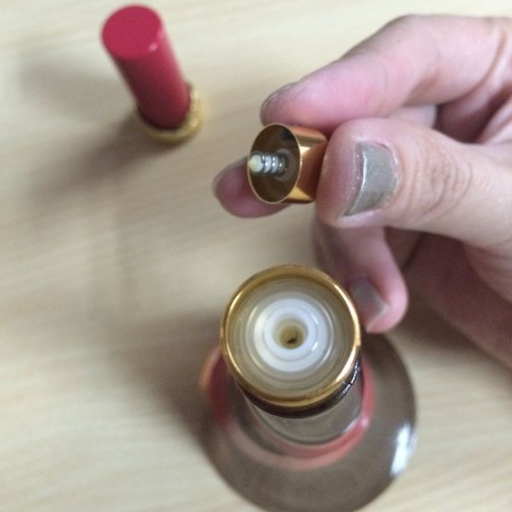
Here are quick and useful steps to diagnose faults with your perfume spray bottle:
1.No Spray Comes Out: The nozzle may be clogged. Remove it and soak it in warm water to dissolve the blockage, or unblock it with a pin. The bottle may be empty.
2.Uneven Spray or Leakage: Try to identify any damage or misalignment in the atomizer. Tighten the nozzle firmly and spray with the bottle in an upright position. Replace the faulty parts.
3.Weak or Short Spray: Make sure the perfume bottle is pressurized. Pump the nozzle a few times gently to increase pressure, or test for leaks in the connections.
4.Bad Odor: Check if the perfume is kept away from direct sunlight or shocking temperatures. Improper storing could degrade the scent.
By systematically approaching these potential issues, you can have your perfume spray working again after very little effort.
Identifying Dried Residue and Its Impact
Usually, dried residues are deposited inside the nozzle or internal mechanisms of a perfume bottle as small amounts of perfume are subjected to air, evaporating volatile components and concentrating oils or solids. Such residue blocks the spray nozzle and thus inhibits spraying. To rectify this, remove the nozzle and rinsing it thoroughly in warm water, or soaking it in rubbing alcohol to dissolve the buildup. Regular upkeep, such as regular cleaning of the nozzle, along with keeping the bottle away from dust and contaminants, minimizes the chances of residue buildup, ensuring good spraying and longer life of your perfume.
Understanding Pump Mechanism Issues
Pump mechanism problems in spray bottles usually originate from clogs, air blockages, or mechanical failure. If the pump is not performing well, the very first step is to check whether debris or dried product is blocking the intake tube or nozzle. Cleaning the tube or nozzle with warm water or alcohol will cure most clogs. Air blockages in the pump can often be eliminated by priming – pressing down on the pump many times until the liquid is drawn into the tube. If it is a mechanical failure like a broken spring or worn-out parts, one should get a new pump. These problems tend not to come up often when the pump is cleaned regularly and stored properly.
When to Seek Professional Help
If the problem remains unsolved despite cleaning the components, few attempts had been made at priming the pump and replacement of damaged parts, then I would consider professional aid. This must be done particularly in case the apparatus is expensive and sophisticated or necessary for my work because expert technicians possess the ability to accurately diagnose advanced failures and provide their repairs. Another instance when I would consult a professional is an instance wherein the warranty terms discourage DIY fixes or when safety is a factor against DIY.
Reference Sources
-
Jarsking: How to Fix a Perfume Bottle That Won’t Spray – Offers simple and effective methods for clearing clogged nozzles.
-
Reddit Lifehacks: How do I fix the bottle of perfume that won’t spritz? – Community-driven tips, including using warm water to unclog the nozzle.
-
iFixit: How to Repair a Jammed Nozzle on a Perfume Bottle – A step-by-step guide for repairing jammed nozzles.
-
TikTok (Tife’s Hub): How to Fix Your Perfume Spray Pump – A quick video tutorial on fixing spray pumps.
-
Gozone Pack: How to Fix the Sprayer of a Perfume Bottle – Covers home remedies and advanced techniques for troubleshooting perfume sprayers.
Frequently Asked Questions (FAQ)
Q:How to Fix a Broken Perfume Nozzle?
A:If your perfume spray won’t spray anymore, the first step is to unscrew the cap and take a close look at the nozzle. It might be clogged with perfume residue. Try gently twisting the nozzle to see if it releases any blockage. If that doesn’t work, a fine needle can be used to clear out any debris.
Q:What to Do When Your Perfume Bottle Won’t Spray?
A:When your perfume bottle won’t spray anymore, check for a hole in the nozzle. If it’s blocked, immerse the nozzle in hot running water for a few minutes to loosen any residue. Once softened, attempt to decant the liquid into another container if necessary.
Q:How to Replace a Nozzle on a Perfume Bottle?
A:To fix a perfume bottle with a broken nozzle, you may need a new nozzle that is compatible with your specific bottle. Carefully unscrew the old nozzle and replace it with the new one, ensuring it fits snugly to maintain the functionality of the perfume spray.
Q:Ways to Fix a Clogged Perfume Spray?
A:A clogged perfume spray can be fixed by turning the bottle upside down and giving it a few gentle shakes. If the ball is stuck, try using a pair of pliers to wiggle it free. If blockage persists, using a cotton ball soaked in alcohol can help dissolve any residue in the nozzle.
Q:How to Decant Perfume from a Glass Container?
A:To decant perfume from a glass container, position it at an angle and carefully pour the liquid into a refillable bottle. If the original bottle has a nozzle that won’t function, you may need to remove it completely and use a funnel for a smoother transfer.
Q:Can You Fix a Perfume Bottle with a Crimped Nozzle?
A:If you discover that the nozzle has been crimped, you can often fix it by gently manipulating it with a pair of pliers. Be cautious not to apply too much force, as this could break the nozzle. A compatible replacement can also be an effective long-term solution.
Q:What Should You Do If Your Perfume Bottle Is Empty?
A:If your perfume bottle is empty but refillable, consider purchasing a new fragrance or using a different scent to refill it. Ensure the nozzle is clean before refilling to avoid mixing fragrances and affecting your overall fragrance experience.
Q:How to Ensure Your Perfume Spray Functions Properly?
A:To ensure the functionality of the perfume spray, regularly clean the nozzle and keep the bottle stored upright. This minimizes the chances of the nozzle getting clogged. If you notice any issues, addressing them promptly will help maintain a consistent fragrance experience.

